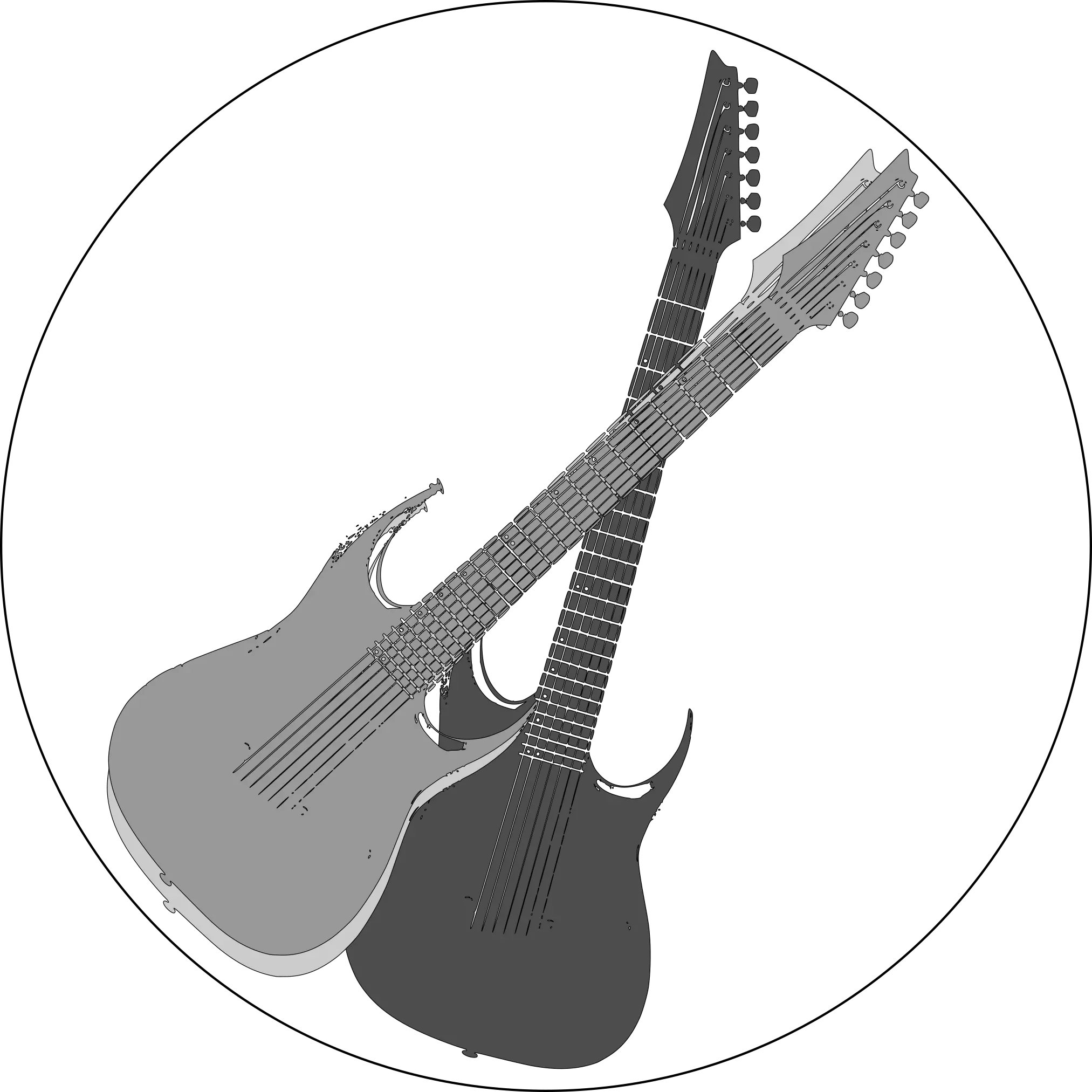Page-specific content
hero_title: “Master Audio Transcription - Complete AI Guide” hero_subtitle: “Turn any audio file into readable sheet music using AI transcription. No manual work required.”
🎵 Watch Demos No signup needed
Drop your audio file here
or
🎵 Watch Demos No signup needed
Turning a favorite track into readable music notation no longer has to be a daunting, time-intensive task thanks to AI.
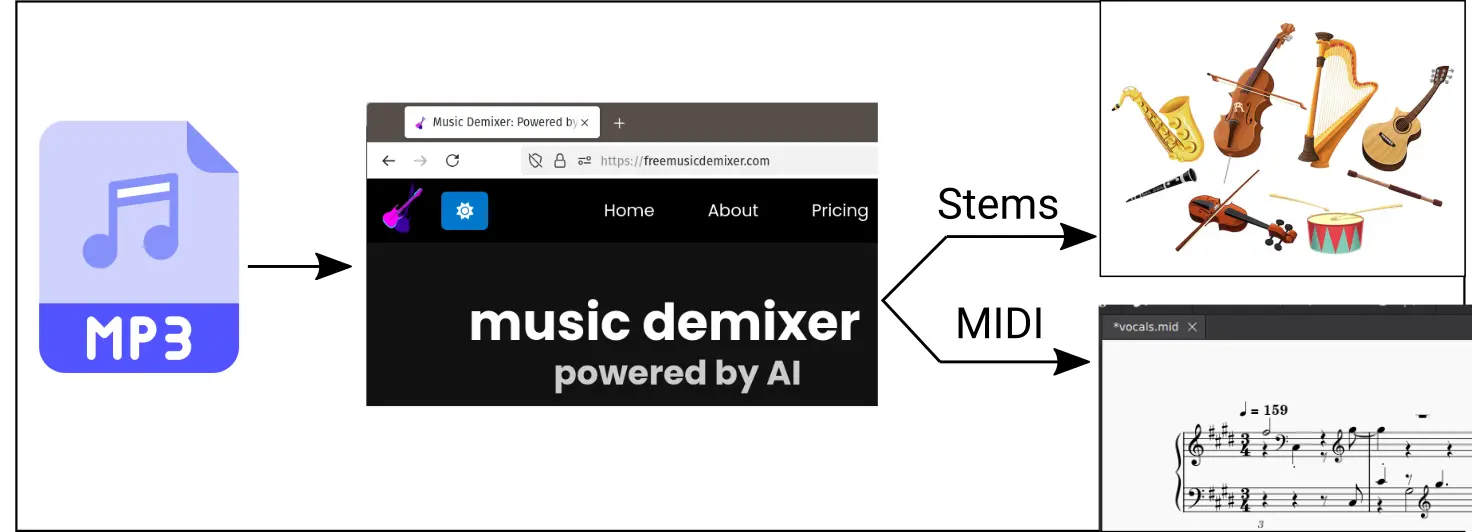
Table of contents
Whether you're a budding musician looking to create sheet music from MP3 files or a seasoned producer who wants to analyze complex chord progressions, our platform's audio-to-sheet music workflow can help. In this guide, we'll walk you through the entire process step-by-step, unlocking new creative and educational possibilities for all types of music enthusiasts.
What is AI music transcription and how does it work?
AI music transcription leverages machine learning algorithms trained on vast datasets of audio. When you feed a recording into a MIDI transcription tool, it identifies pitches, rhythms, and instruments, ultimately producing a digital representation of the notes as a MIDI file. By using AI music transcription, you can transform any audio — be it a professional studio track or a home recording — into a format that's easy to edit, study, and play along with. Unlike manual transcription, which can take hours of painstaking work, AI-driven tools handle the heavy lifting in a fraction of the time.
Why convert audio to MIDI?
When you convert audio to MIDI, you're essentially translating a raw sound wave into a structured, note-by-note blueprint of the music. Here are a few key benefits:
- Flexible Editing: MIDI allows you to change instruments, adjust tempos, transpose keys, or even tweak individual notes without degrading sound quality.
- Audio-to-Sheet Music Made Simple: Once you have a MIDI file, you can now generate printable sheet music directly on our platform (details below!).
- Better Understanding of Complex Pieces: By converting a dense mix into separate instrument stems and corresponding MIDI tracks, you can pinpoint intricate melodies, harmonies, and rhythms.
- Education and Practice: Teachers and students can study complicated musical passages by viewing them as standard notation, making it easier to learn and practice.
Step-by-step: from raw audio to printable sheet music
1. Choose your audio file
Start by selecting the track you want to transcribe. This could be a popular hit, a classical recording, or even a personal composition. Our platform accepts common audio formats like MP3 or WAV.
2. Isolate instrumental stems (optional but recommended)
For the highest quality AI music transcription results, consider using our stem separation feature first. By isolating a particular instrument or vocal line, you'll get a cleaner, more accurate MIDI output. This especially helps if you want to create sheet music from MP3 recordings that have dense mixes.
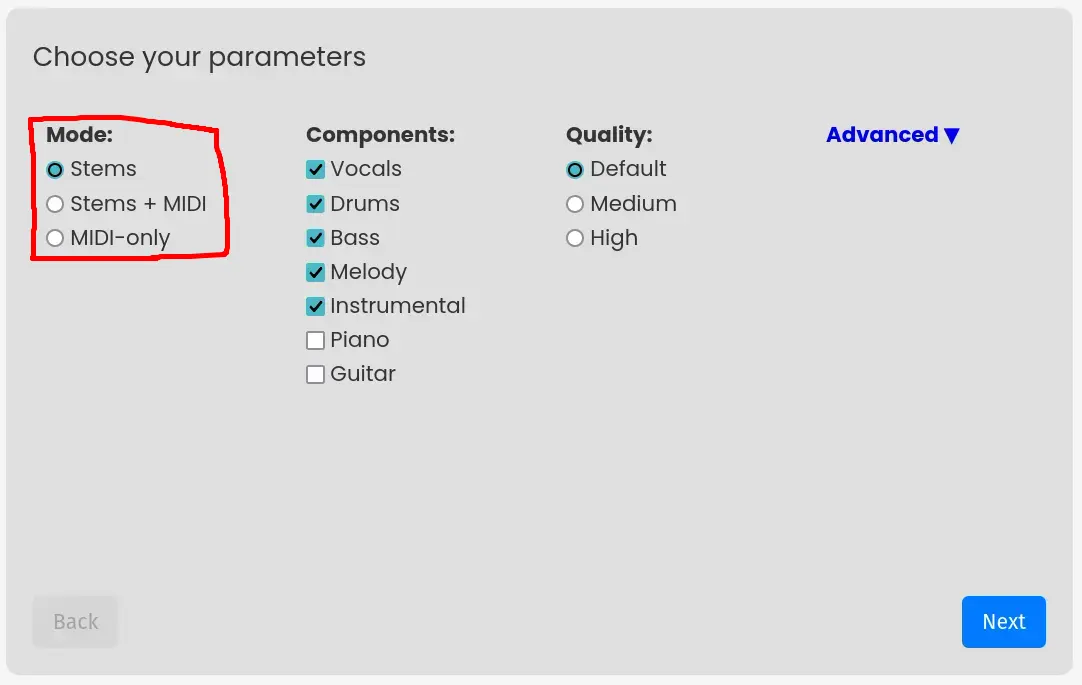
3. Run the MIDI transcription tool
In your project settings, enable the "Stems + MIDI" option. Our MIDI transcription tool uses advanced algorithms to analyze pitches, timing, and intensity, swiftly producing a MIDI file. The process is largely automated, giving you professional-grade results without the hassle.
4. Download your MIDI and sheet music files
Once the transcription process is complete, you can download .wav files for the stems, .mid files for the MIDI outputs, and new .musicxml files for printable sheet music. This bridges the gap between raw audio and fully formatted sheet music.
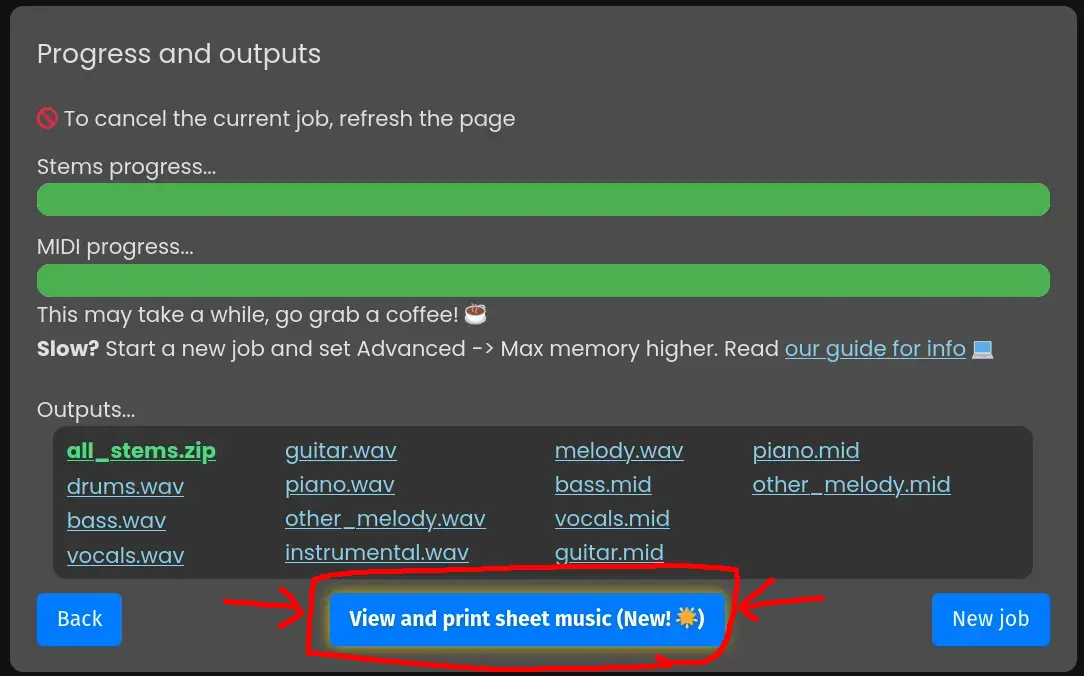
5. View and print sheet music directly in your browser
Our new integrated sheet music viewer makes it easy to preview and print your score without needing additional software. Simply click the "View and print sheet music" button to open your sheet music in a new tab, powered by OpenSheetMusicDisplay.
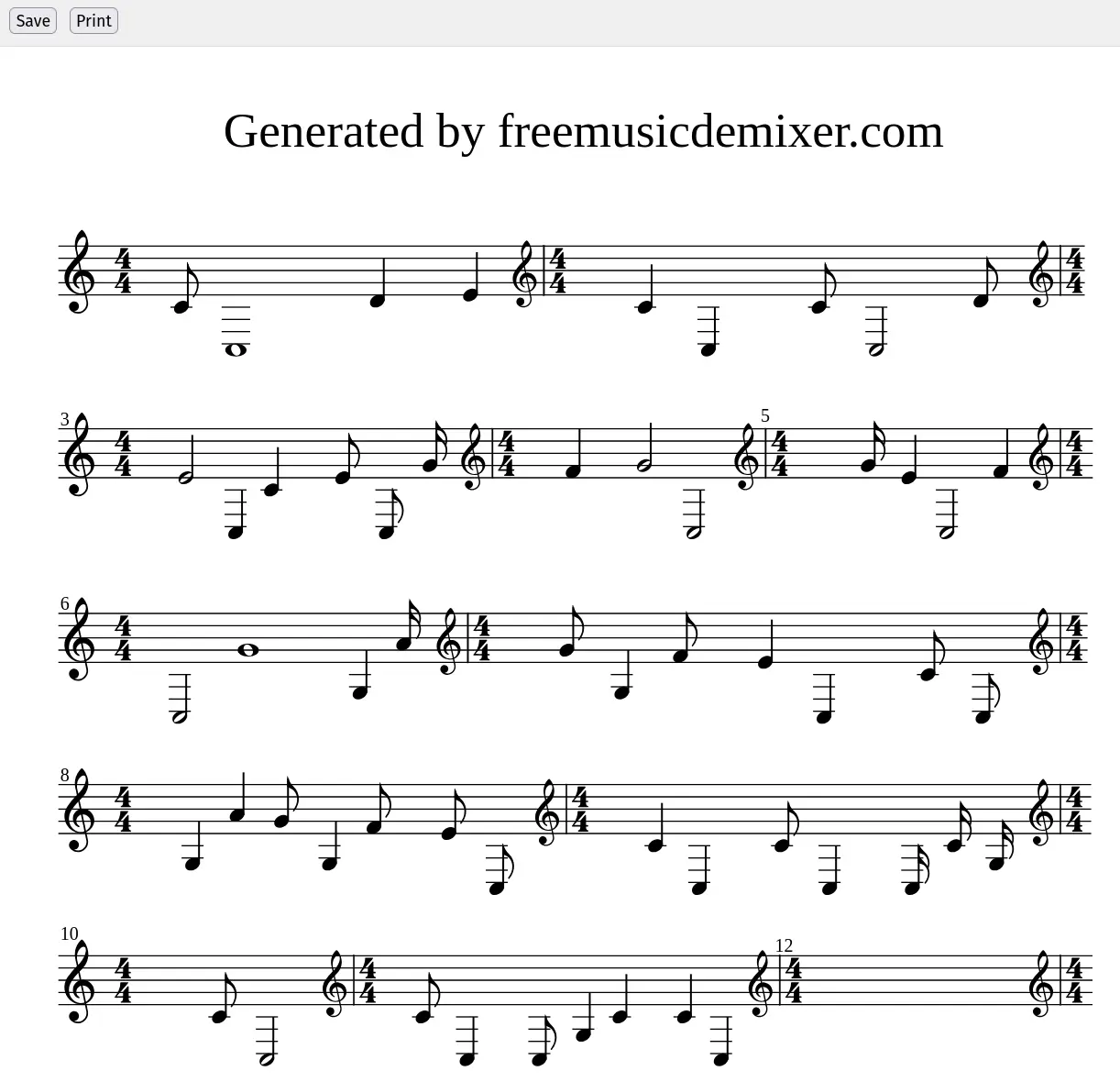
6. Refine and edit in notation software (optional)
You can also download the .musicxml file and import it into your preferred notation software (e.g., MuseScore) for further edits. This allows you to polish phrasing, dynamics, and articulations before saving or printing.
Tips for getting the best results
Start with high-quality audio
Clear, well-balanced recordings are easier for the AI to parse, resulting in more accurate transcription. Use our highest-quality stem separation settings for the best results.
Focus on a single instrument track at a time
If you're dealing with complex music, isolate individual instruments before transcription. Fortunately, stem separation is the core feature of our website, leading to a seamless music separation-to-transcription pipeline.
Experiment with different tracks
Try transcribing a vocal melody, a piano line, or a guitar solo. Each instrument brings unique insights into composition and arrangement.
Manual edits go a long way
Although the transcription will be highly accurate, refining your notation in a sheet music editor ensures the cleanest final result.
What's new? Printable sheet music directly on our platform!
With the introduction of our sheet music feature, you no longer need external software to turn audio into readable scores. Highlights include:
- Integrated sheet music viewer: Preview your score directly in your browser.
- MusicXML exports: Save your sheet music in a universal format compatible with notation software like MuseScore or Finale.
- Direct printing: Print your score instantly, perfect for practice, teaching, or performances.

For more details on this feature, check out our MP3 to sheet music converter.
FAQ: common questions and concerns
Is the transcription always perfect?
AI has advanced significantly, but complex audio may still require minor manual corrections. Still, the process is vastly more efficient than starting from scratch.
Will it work for all genres?
Yes, you can convert audio to MIDI across various genres — classical, jazz, rock, pop, and beyond. The accuracy can vary based on instrumentation and recording quality.
Is it legal to transcribe any audio into MIDI?
You can certainly transcribe for personal study, education, or arrangement. However, always respect copyright laws if you plan to distribute or publish these transcriptions.
Take your music projects to the next level
By combining AI music transcription with MIDI conversion and our printable sheet music feature, you can effortlessly create and refine scores from MP3 files and beyond. Whether you're diving deep into music theory, perfecting a performance, or experimenting with production techniques, our platform empowers you to interact with music on a whole new level.
Ready to give it a try? Use the tool above to upload your track and see for yourself how simple it can be to transform any recording into editable, printable sheet music. Your next musical breakthrough is just a few clicks away!
